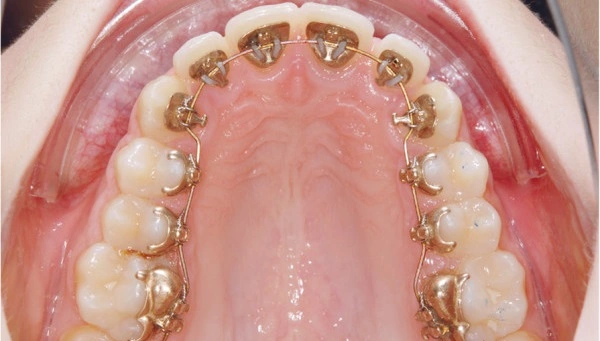Many adults feel the opportunity to improve their smiles has passed them by. They imagine orthodontics as a mouthful of metal braces and a return to the dreaded teen years. However, thanks to advances in cosmetic dentistry, adults can discreetly straighten their teeth without most people even noticing they are doing so!
Because of several technological advances, more adults are opting for self-ligating braces or clear aligners than ever.
Types of Braces for Adults
For grown-ups who want to minimize the appearance of their braces, two of the best options are self-ligating clear braces and lingual braces.
Self-ligating braces are similar to traditional braces except they don’t require elastics to secure brackets to the archwire. Instead, these braces use special clips (or doors) to help the archwire move teeth into place.
Self-ligating braces provide numerous benefits. For more information Click Here
Adult patients who want to minimize the appearance of their braces usually opt for ceramic braces (also known as self-ligating clear braces), which are made of transparent or tooth-colored ceramic. This material blends into the teeth—resulting in braces that are much less noticeable.
Another option for patients who want to minimize the appearance of their braces is lingual braces, which are placed on the back sides of the teeth. This positioning makes them much less conspicuous and barely visible when a patient smiles. However, lingual braces have some disadvantages.
- Treatment time is longer.
- More adjustments are required.
- Patients may develop a lisp.
- Lingual braces are more challenging to clean.
- These types of braces can irritate the tongue.
Lingual braces are more expensive than other types of braces because they are made custom for each patient. In addition, they can be more cumbersome due to their close proximity to the tongue. However, patients concerned about the cosmetic appearance of braces may find that lingual braces are worth the investment.
The Invisibility of Invisalign (Click Here To Know More)
Unlike braces that use wires and brackets, Invisalign® uses a series of transparent, customized aligners (trays) to reposition and straighten teeth. Patients switch to a new tray every 1-to-2 weeks. Office visits are scheduled approximately every 8 weeks so the orthodontist can check on the patient’s progress and make necessary adjustments to ensure a good result.
The primary reason adults choose Invisalign® over self-ligating clear braces is that the aligners are virtually undetectable. Made from transparent materials, most people don’t notice when someone is wearing an aligner.
Patients have the luxury of removing the aligners before meals, as well as during brushing and flossing. This allows them to maintain their normal oral hygiene routine. Invisalign® is also a fantastic alternative for patients who need a more flexible treatment plan.
Despite its many advantages, Invisalign® is not suited for everyone.
- This treatment option is best for patients who only need a mild alignment and whose teeth are in good condition.
- The trays must be worn up to 22 hours a day. If a patient is unable to do this, treatment will be ineffective.
- The trays may cause a slight speech impediment for some patients during treatment, however, it is just during the initial period.
- Treatment must be monitored by an orthodontist to ensure the teeth and surrounding structures are staying healthy, teeth are moving as predicted, and necessary adjustments and course corrections are made.
It is important to know that clear aligners are simply a tool used by an orthodontist. The results that are achieved in treatment are dependent on the skill level of the doctor and staff. Proper planning and monitoring of treatment with clear aligners is crucial to a successful result.

